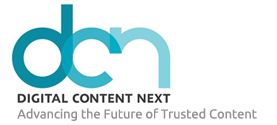With a rapidly evolving digital media landscape, it’s not surprising that media companies — newsrooms in particular — have faced new challenges and new pressures. A significant decline in traditional broadcast and appointment-style viewership has coincided with an explosion in increasingly accessible digital and on-demand streaming. Technology has already radically altered many of the fundamental realities around content creation and consumption that newsrooms were built on.
Media professionals recognize the need to evolve to keep pace with these changes. But connecting with and retaining content consumers who now have a virtually unlimited range of options available to them is easier said than done. More importantly, finding efficient and cost-effective ways to produce, distribute, and monetize content can seem like a formidable hurdle. But it is possible, especially with new tools and platforms emerging that are designed to enable newsrooms and other traditional content creators to make the process better fit the realities of today.
Be an educated adopter
Every platform makes big claims. All promise new efficiencies. Educate yourself and understand how to examine those claims with a critical eye. Make sure whatever path you choose, your digital content solution can efficiently develop content and create and deliver high quality viewing experiences in a way that is impactful, profitable, and sustainable. The right solution should answer important questions for you, including how to balance live and pre-recorded content, how to access and insert ads, and how to do all that in a streamlined and efficient manner.
Utilize automation
For organizations where a large majority of on-demand content originates from their live programming or other sources of traditional linear content, taking full advantage of digital streaming requires some level of automated prowess. The goal is to minimize the number of toolsets needed to be deployed throughout the process of generating digital streaming content.
Automation and “hands-free” production can yield new efficiencies, saving time and money on tools, resources, and manpower at a time when media companies are often dealing with tight margins and are already making tough ROI calculations. In that context, the ability to effectively automate the process of generating more digital content is enormously valuable. Automated tools and solutions make it possible to accelerate the digital production and distribution of your content without interrupting what you are already doing.
Lighten the workload
For media companies, creating content is just the first step. It is critically important to find ways to streamline the workflow required to efficiently edit, develop and distribute volumes of new content to digital audiences. Fortunately, new suites of tools are becoming available that can make that digital/online transition possible.
Keeping fresh content in front of viewers is difficult. Instead of relying on tools that require manual curation of playlists – and thus a person on staff dedicated to the role – consider a tool with capabilities to populate playlists automatically. This frees up staff to focus on the actual process of creating the content, rather than managing it. And the best tools on the market today also can lighten the load in other ways, from auto-clipping a newscast to the seamless transition between live and breaking news to prerecorded video.
Prioritize simplicity
At a time when some newsrooms have had to entirely reorganize to accommodate much more extensive digital production and distribution needs, simplicity is an appealing prospect. Which is why it makes sense to invest in tools meant to automate the ingestion of incoming content. Whether it’s aggregating content from multiple newsrooms or introducing content from other sources, bringing designated content from a range of different sources into the digital content ecosystem of target audiences is a way to lessen the load on your team and your resources, while still delivering compelling content.
Another important feature for streamlined simplicity is handling all of the technical heavy-lifting server-side, which makes it possible to have a simplified workflow and create a unified viewing experience across all digital platforms.
Embrace efficiency
As newsrooms evaluate and leverage tools and technology designed specifically to help them take that all-important step to expand the distribution of streaming monetizable content, it’s important to understand how efficiency translates into revenue. Monetization opportunities are all about scale. More content yields more viewers, which subsequently creates numerous opportunities for monetization. In other words, efficiency isn’t just helpful, it’s a prerequisite for sustainable profitability.
To take the next step forward, newsrooms will need to embrace tools and systems that allow them to quickly, efficiently and automatically update digital content. This includes graphic elements, closed captioning, and added metadata.
Engage viewers
Recognize the importance of the viewer experience. Manage your content with tools designed to connect content with viewers and help them understand critical context about what they are watching. Creating a better viewing experience also means letting consumers know when something is breaking news, and then returning them back to what they were originally tuned in to watch. It’s the feel of live content with dynamic elements that elevate the standard static viewing model into something more engaging.
Viewer expectations are skyrocketing. And media companies are wrestling with complex (and often costly) changes they feel like they need to make to meet those expectations. But charting a path forward in our new environment might be easier than many suspect. Streamlined content creation tools can not only make the digital transition successful for newsrooms and their operational needs; they can enhance the online viewing experience and boost bottom lines in the process.
About the author
David Hemingway is the Sr. Product Manager, New Ventures at Bitcentral, one of the video industry’s most trusted and innovative software providers.
























